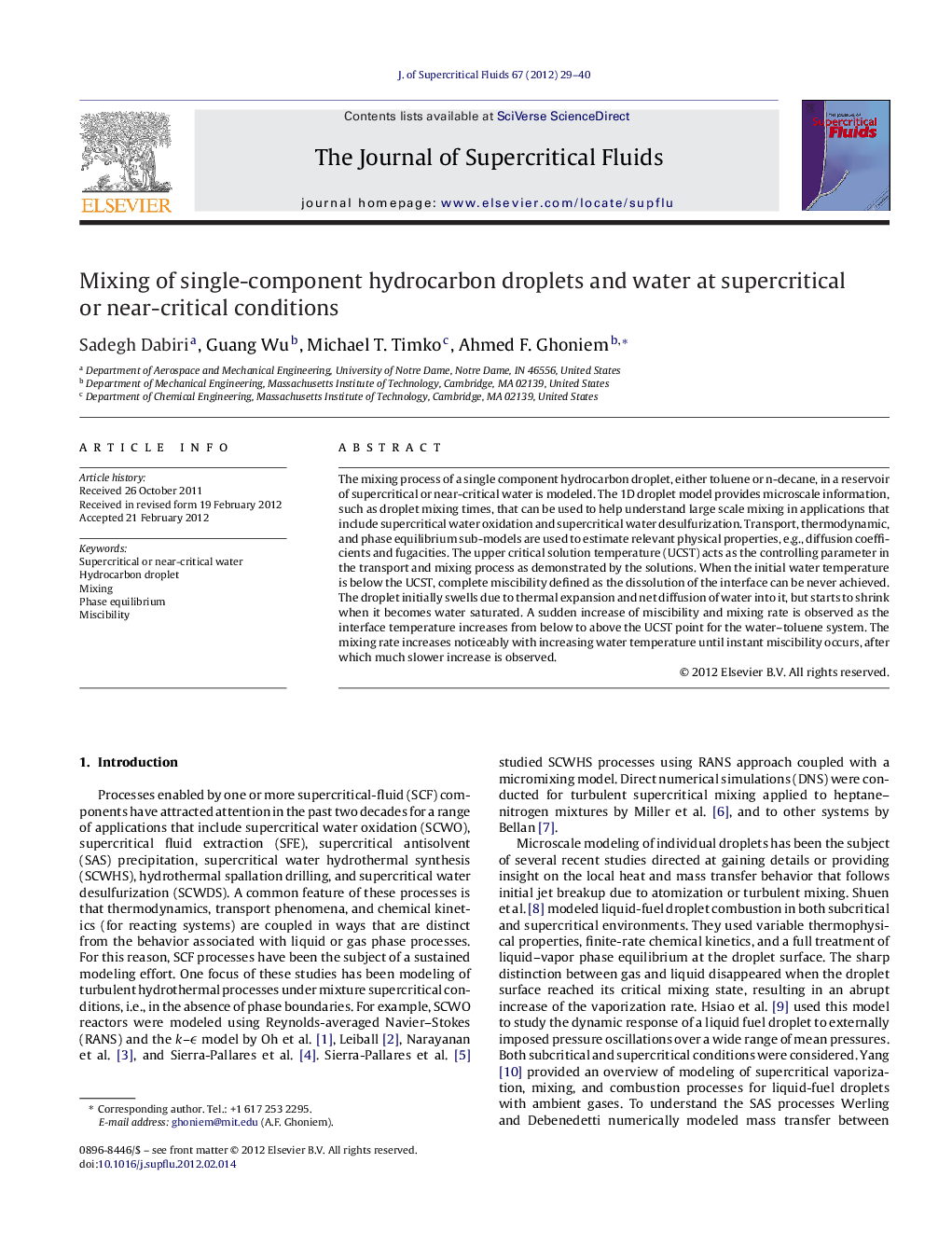| کد مقاله | کد نشریه | سال انتشار | مقاله انگلیسی | نسخه تمام متن |
|---|---|---|---|---|
| 231008 | 1427410 | 2012 | 12 صفحه PDF | دانلود رایگان |

The mixing process of a single component hydrocarbon droplet, either toluene or n-decane, in a reservoir of supercritical or near-critical water is modeled. The 1D droplet model provides microscale information, such as droplet mixing times, that can be used to help understand large scale mixing in applications that include supercritical water oxidation and supercritical water desulfurization. Transport, thermodynamic, and phase equilibrium sub-models are used to estimate relevant physical properties, e.g., diffusion coefficients and fugacities. The upper critical solution temperature (UCST) acts as the controlling parameter in the transport and mixing process as demonstrated by the solutions. When the initial water temperature is below the UCST, complete miscibility defined as the dissolution of the interface can be never achieved. The droplet initially swells due to thermal expansion and net diffusion of water into it, but starts to shrink when it becomes water saturated. A sudden increase of miscibility and mixing rate is observed as the interface temperature increases from below to above the UCST point for the water–toluene system. The mixing rate increases noticeably with increasing water temperature until instant miscibility occurs, after which much slower increase is observed.
Figure optionsDownload as PowerPoint slideHighlights
► A detailed analysis of the transport and mixing process at supercritical conditions between a hydrocarbon droplet and water is performed.
► The liquid–liquid phase equilibrium (LLE) is calculated using a Peng–Robinson EoS, with temperature-dependent binary interaction parameter to avoid the loss of accuracy of the LLE prediction at lower temperatures and temperatures near the upper critical solution temperature (UCST).
► An abrupt increase of miscibility and mixing rate may be observed as the temperature increases from a below-UCST point to an above-UCST point, depending on whether the phase equilibrium curve of the water–hydrocarbon system is flat near the UCST.
► The mixing rate increases noticeably with increasing water temperature until instant miscibility occurs.
Journal: The Journal of Supercritical Fluids - Volume 67, July 2012, Pages 29–40